Typosquatting is a phishing attack that hackers use to steal the user’s information once he lands on a phishing page (a page that mimics the original website). Microsoft Edge and Google Chrome have a built-in Typosquatting Checker that will protect you against typosquatting attacks. In this article, we will show you how to enable Typosquatting Checker in Edge and Chrome.
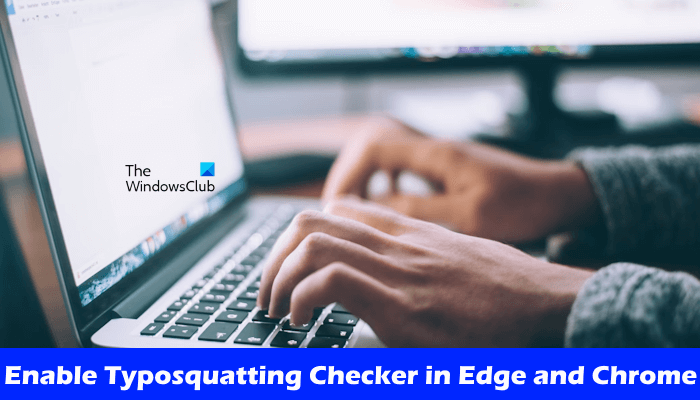
Typosquatting works on the typo errors. Hackers usually register domain names identical to popular websites. These domain names have typo errors. For example, goggle.com is a domain name identical to google.com that can be used for hacking purposes. Edge and Chrome can help you protect from typosquatting attacks. Here, we have shown the steps to enable Typosquatting Checker in Edge and Chrome.
When the Typosquatting Checker is enabled, Edge and Chrome will show you a message that you might have misspelled the domain name of the website you want to visit. This warning message will protect you from landing on a phishing website due to your typing mistake in the domain name or website address. Typosquatting Checker works on some popular websites and does not work on all websites. However, by enabling it, you will add an additional layer to your protection while surfing the internet on Edge and Chrome.
Enable Typosquatting Checker in Edge
The following instructions will guide you on enabling Typosquatting Checker in Edge.
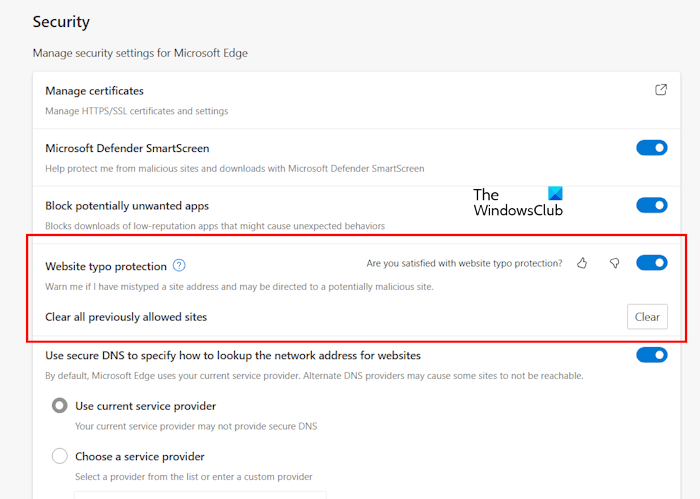
- Open Microsoft Edge.
- Click on the three horizontal dots on the top right side and select Settings.
- Select the Privacy, search, and services category from the left side.
- Scroll down and turn on the Website typo protection switch under the Security section.
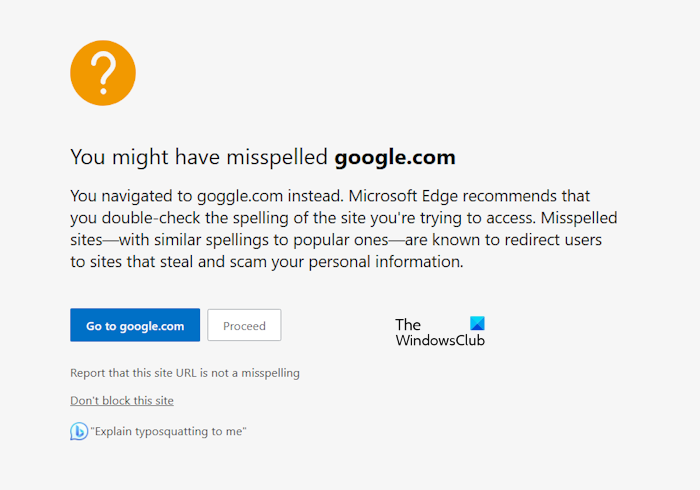
After enabling the Typosquatting Checker in Edge, when you mistakenly type the address of a popular website, Edge will show you a warning about the typing mistake and show you the following two suggestions:
- Go to the correct website.
- Proceed
If you click on Proceed, Edge will take you to the website the address of which you have entered in the address bar.

When this feature is disabled in Edge, it will not show you the warning message. Instead, it will display the network connectivity error as shown in the above image or take you to the website the address of which you typed in the address bar, provided the website is available. In this case, you may land on a malicious website.
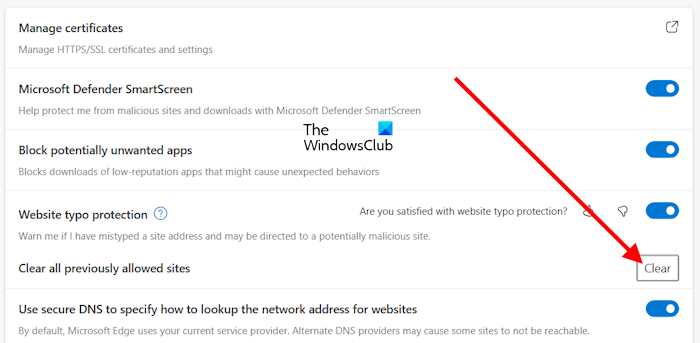
When you click on the Proceed button, Edge will save that website in temporary storage memory (cache) and not show you the warning message for the same website address the next time. Hence, if you click on the Proceed button by mistake, you can reverse your action by clicking on the Clear button next to the Clear all previously allowed sites option.
Enable Typosquatting Checker in Chrome
In Google Chrome, the Typosquatting Checker is enabled by default. In the previous version of Google Chrome, there was a flag that allowed users to enable Typosquatting Checker.
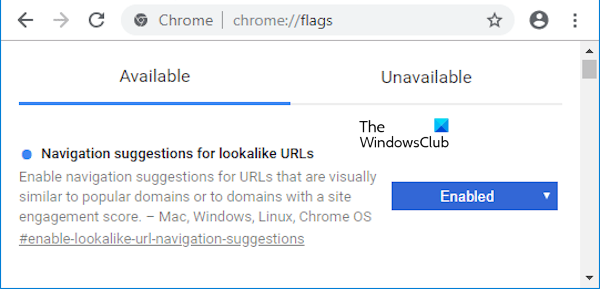
That flag was called “Navigation suggestions for lookalike URLs.” Users had to enable this flag to enable Typosquatting Checker in Chrome. But in the latest version of Chrome, this flag is not available. I tried to find it in Chrome Flags but this flag was not available to me.
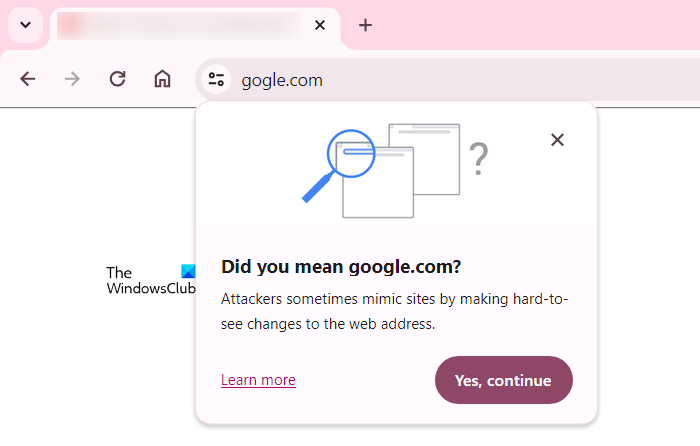
But when I checked this by entering the incorrect URL, gogle.com instead of google.com, Chrome showed me a message (refer to the above screenshot). If you are also using the latest version of Google Chrome, the above-mentioned flag will not be available to you. But the Typosquatting Checker will be enabled by default.
Conclusion
The Typosquatting Checker is a great feature to protect users from phishing or malicious websites that are created to steal users’ information, like passwords, banking information, etc. Usually, the domain name and website design of the phishing websites are identical to the popular websites, so scammers can trick users easily.
Typosquatting Checker works well, but it is not 100% accurate and it does not work on all websites. Therefore, we suggest you not become fully dependent on this Typosquatting Checker in Microsoft Edge and Google Chrome. You should be careful while surfing the internet.
I hope this helps.
How to turn spell check on in Microsoft Edge?
You can turn on Spell Check in Microsoft Edge in its Settings. Open Edge Settings and go to Languages. Now, turn on the English grammar and spell check assistance button.
How do I turn Spell Check on in Chrome?
To turn on Spell Check in Chrome, open its Settings, and go to Languages. Now, turn on the “Check for spelling errors when you type text on web pages” button on the right side. You can also select Basic Spell Check or Enhanced Spell Check in settings.
Read next: How to configure Tracking Prevention & Privacy Settings in Microsoft Edge.
Leave a Reply